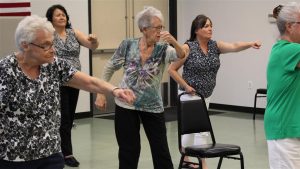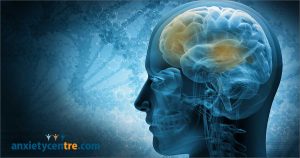Improve the Psychological Well-Being of Social Care Workers with Mindfulness
By John M. de Castro, Ph.D.
“Mindfulness also helps social workers with self-care . . . allowing them to notice when they’re getting overwhelmed and recognize signs of burnout earlier. Social workers . . . deal with extremely difficult things, and mindfulness can help them not feel overloaded.” – Kate Jackson
Stress is epidemic in the western workplace with almost two thirds of workers reporting high levels of stress at work. In high stress occupations, like social work, burnout is all too prevalent. Burnout is the fatigue, cynicism, emotional exhaustion, sleep disruption, and professional inefficacy that comes with work-related stress. Improving the psychological health of individuals involved in social care, then, has to be a priority.
Contemplative practices have been shown to reduce the psychological and physiological responses to stress. Indeed, mindfulness has been shown to be helpful in treating and preventing burnout, increasing resilience, and improving sleep. It makes sense that intervening early in the training for professional social care workers would help prevent later stress effects and burnout. Hence, it is reasonable to examine the ability of mindfulness training to improve the well-being of students preparing for careers as social care professionals.
In today’s Research News article “Effects of Mindfulness-Based Stress Reduction on Health and Social Care Education: a Cohort-Controlled Study.” (See summary below or view the full text of the study at: https://www.ncbi.nlm.nih.gov/pmc/articles/PMC8190752/ ) Lo and colleagues recruited postgraduate students in social work, family therapy, or counseling and assigned them to either a no-treatment control or to receive 8 weekly, 2.5-hour sessions of Mindfulness-Based Stress Reduction (MBSR). The MBSR program consists of practice with meditation, yoga, and body scan, along with discussion and home practice. They were measured before and after training for burnout, perceived stress, work engagement, physical stress, empathy, and time in home practice.
They found that in comparison to baseline and the no-treatment control group the group that received Mindfulness-Based Stress Reduction (MBSR) had significantly lower levels of perceived stress, physical distress, burnout, emotional exhaustion, and depersonalization of the client, and significantly higher levels of vigor. Hence, they found that participation in the MBSR program resulted in significant improvement in the psychological health of social care postgraduate students.
It should be noted that the present study used a weak research design that lacked random assignment of participants to groups, an active control condition, and follow-up measurements. This leave the interpretation open to confounding explanations and does not determine if the effects are lasting. Future studies should employ random assignment, an active control condition, e.g. exercise, and follow-up measurements.
But previous better controlled research has demonstrated that mindfulness training increases vigor and reduces perceived stress, distress, burnout, and emotional exhaustion. So, the present results, at least in part, are likely due to the ability of Mindfulness-Based Stress Reduction (MBSR) training to improve psychological health. This suggests that the psychological health and resistance to stress and burnout in students preparing for careers as social care professionals can be strengthened by mindfulness training. This may better prepare them to deal with the stresses of their professional careers and make them more effective professionals.
So, improve the psychological well-being of social care workers with mindfulness.
“mindfulness-based strategies . . . will not prevent stress completely or take it away when it occurs, but doing them with care and attention on a regular basis can help us manage more effectively.” – Deborah Lisansky Beck
CMCS – Center for Mindfulness and Contemplative Studies
This and other Contemplative Studies posts are also available on Google+ https://plus.google.com/106784388191201299496/posts and on Twitter @MindfulResearch
Study Summary
Lo, H., Ngai, S., & Yam, K. (2021). Effects of Mindfulness-Based Stress Reduction on Health and Social Care Education: a Cohort-Controlled Study. Mindfulness, 1–9. Advance online publication. https://doi.org/10.1007/s12671-021-01663-z
Abstract
Objectives
Mindfulness practice has been recommended as part of health and social care education and training because of its potential benefits in fostering clinical skills and attitudes, increasing self-care, and reducing the effect of stress in education and occupation. The objectives of this study were to evaluate the effects of a mindfulness-based stress reduction (MBSR) program on stress, physical distress, job burnout, work engagement, and empathy for health and social care education.
Methods
Students (N = 124) from postgraduate programs in social work, counseling, and family therapy were recruited. Sixty-four students participated in an 8-week MBSR program as an elective course. Sixty students were recruited from other elective courses in the same cohort as control group participants. All participants completed self-report assessments.
Results
The results suggested that MBSR was associated with significant improvements in perceived efficacy and vigor and significant reductions in physical distress, total job burnout, emotional exhaustion, and depersonalization of clients compared with the control group.
Conclusions
This study contributes to the growing body of literature highlighting the potential use of mindfulness practice to improve students’ personal well-being and professional growth in health and social care education. Mindfulness practice should be further promoted in health and social care education and training.
https://www.ncbi.nlm.nih.gov/pmc/articles/PMC8190752/









